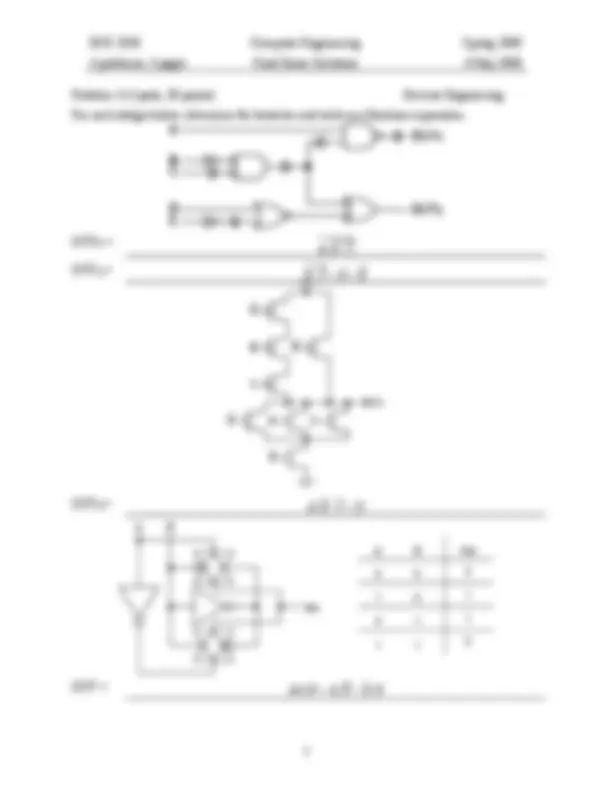



Study with the several resources on Docsity

Earn points by helping other students or get them with a premium plan


Prepare for your exams
Study with the several resources on Docsity

Earn points to download
Earn points by helping other students or get them with a premium plan
Community
Ask the community for help and clear up your study doubts
Discover the best universities in your country according to Docsity users
Free resources
Download our free guides on studying techniques, anxiety management strategies, and thesis advice from Docsity tutors
The solutions to the final exam of the computer engineering course ece 2030 from spring 2000. It includes the solutions to four problems covering topics such as implementing storage using multiplexers and latches, assembly language programming, instruction formats, and reverse engineering. Students can use this document to check their answers and understand the solutions to the exam problems.
Typology: Exams
1 / 3

This page cannot be seen from the preview
Don't miss anything!


4 problems, 3 pages Final Exam Solutions 4 May 2000 Problem 1 (3 parts, 30 points) Implementing Storage For each part of this problem, connect the inputs and output of your design to the named signals. Part A (10 points) Using only the devices below, implement a two-to-one mux.
Part B (10 points) Now using this two-to-one mux, implement a transparent latch using basic gates (NAND, NOR, AND, OR, NOT, pass). Try to minimize transistors.
Part C (10 points) Now using a two-to-one mux and two transparent latches, implement a register with read and write enable using basic gates (NAND, NOR, AND, OR, NOT, pass).
4 problems, 3 pages Final Exam Solutions 4 May 2000
Problem 2 (4 parts, 30 points) Assembly Language Programming Consider the following MIPS program subroutine. The attached sheet lists the instruction set. address label instruction 1000 games: addi $1, $0, 5000 1004 addi $5, $0, 5996 1008 lw $3, 0($1) 1012 loop: addi $1, $1, 4 1016 lw $2, 0($1) 1020 slt $4, $2, $ 1024 beq $4, $0, skip 1028 add $3, $2, $ 1032 skip: bne $1, $5, loop 1036 jr $ Part A (10 points) How many times is the loop body in this program fragment executed? number of loop iterations: 249 Part B (5 points) Under what conditions, relative to $2 and $3, is the instruction at address 1028 executed. The instruction executes if $2 < $ Part C (10 points) What is contained in register $3 when the fragment completes (what does this fragment do?) The subroutine finds the minimum value (returned in $3) of a 250 word array stored in memory starting at address 5000. Part D (5 points) What is the name of the value stored in $31 when this fragment begins? return address
Problem 3 (1 part, 15 points) Instruction Formats Suppose a datapath has three operand busses (two source, one destination), 25 instruction types, and 16 registers where each register is 32 bits wide. Immediate operands can be in the range of ±4K. Determine the following values for the resulting instruction format. For the last two questions, assume the same operand number and types used in the MIPS format.
bits needed to specify an opcode 5 bits needed to specify a register operand (^) 4
bits needed to specify an immediate operand 13 bits needed to specify an R-format instruction 5 + 4 + 4 + 4 = 17 bits needed to specify an I-format instruction (^) 5 + 4 + 4 + 13 = 26